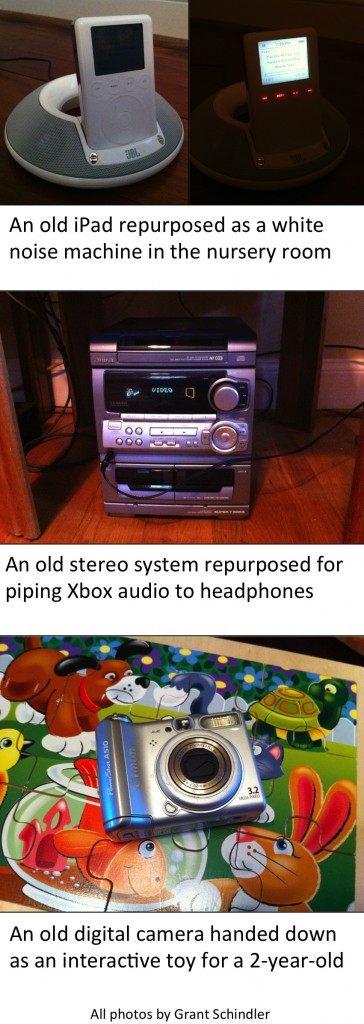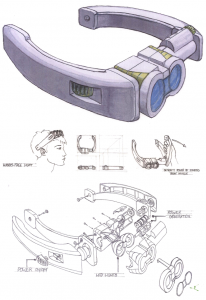A few months ago, I was at Ubicomp 2012 where I saw an interesting paper about what people do with outdated technology. In my experience working with families, I’ve seen many examples of something not mentioned in this paper — families repurposing or handing down technologies to children as a way of giving old technology new life. An example from my own family is using an old laptop as a dedicated Skype terminal, but another researcher in the audience at this paper’s presentation had many examples that were even better. Grant Schindler is a research scientist at Georgia Tech and the founder of Trimensional and I was able to catch up with him at GVU 20 and interview him in more detail about his experience:
Grant: I gave our 2-year-old son my old digital camera after he showed interest in using my current camera. He uses it to take pictures of things, especially when he sees me using my camera which is just a newer version of the one he uses. He often will take a picture of something (sometimes they’re pretty good!) and then look at the LCD screen and say “That’s cute” because he thinks that’s what you say after you take a photo.
I have a 3rd generation iPod from 2003 that still works just fine and we have used it as a white noise machine for both of our children as infants. It stays plugged into the JBL speaker ring that I received as a wedding gift in the same era. The half-hour-long MP3 of ocean surf that we keep on repeat is one that I ripped from a CD that I sometimes listened to in the early 1990s to relax or to fall asleep.
I also remembered that I use an Aiwa all-in-one stereo system from my college years to pipe audio from my Xbox into a pair of headphones. I looked multiple times into getting another device to serve this function, but it seems most people use expensive home theater receivers. There are some $30 mini-amplifiers that I think could do the same thing, but then the question is why get a new device when my current method works?
Lana: What kinds of technologies do you think lend themselves better to this kind of reuse?
Grant: Technologies that are standalone devices work best, so that the input and output mechanisms don’t matter. While we could pull the photos off of my son’s camera via SD card, we have not yet — the important part is that it has a built-in screen on which we can view the photos together right after he takes them. The iPod + speaker/charger is effectively a standalone device that outputs audio. Bear in mind, I have not synced that 2003 iPod in several years — the firewire cable that the iPod came with won’t hook up to any of my current machines, though I’m sure I could use a more recent USB cable if I needed to.
Lana: Have there ever been features of a particular device that prevent it from being reused in a way that you might want?
Grant: In the mid-2000s, I replaced my Sony CRT monitor with an Apple Cinema Display that carried power, USB, and the display signal in a single cable. It served me well for many years, but Apple has changed their display connectors so many times since then that it is too much hassle to continue using it as a second display for a laptop due to the many-tentacled adapters and external power supplies involved.
So really, it’s the fact that it’s not a stand-alone device. The connection interfaces are the issue. We were using my wife’s 1999 HP LaserJet until it stopped functioning in early 2012 via a series of adapters (parallel to serial to USB) along with some open source printer drivers. It was ugly but it worked. But, I realize these last two are less re-use examples and more “continued use as intended” situations.
As ideas like sustainable and cradle-to-cradle design gain more and more momentum, perhaps another approach is to think about how the devices we make could stay useful longer, even if they end up serving new functions. There’s an opportunity in designing for handing-down and repurposing.




